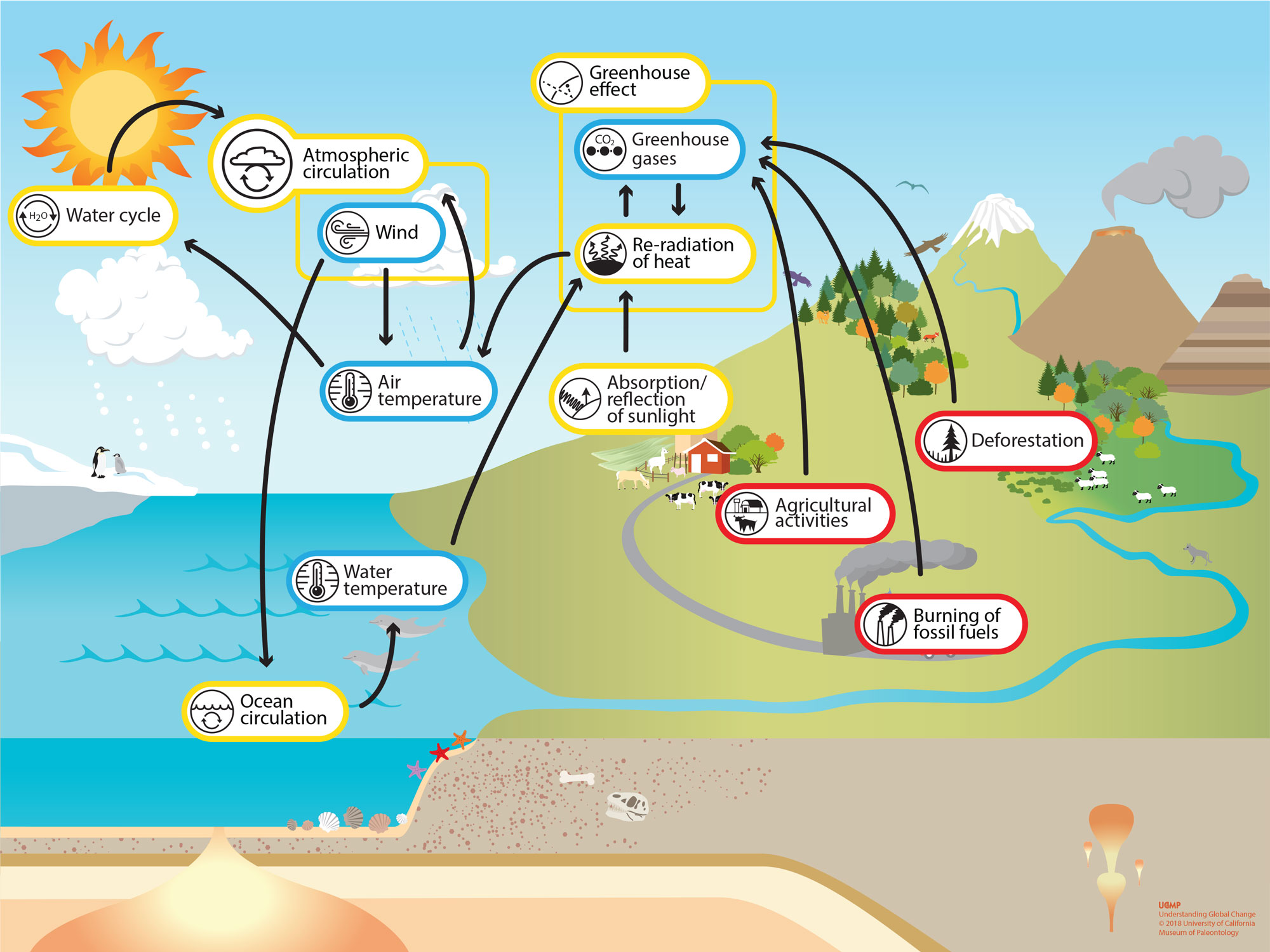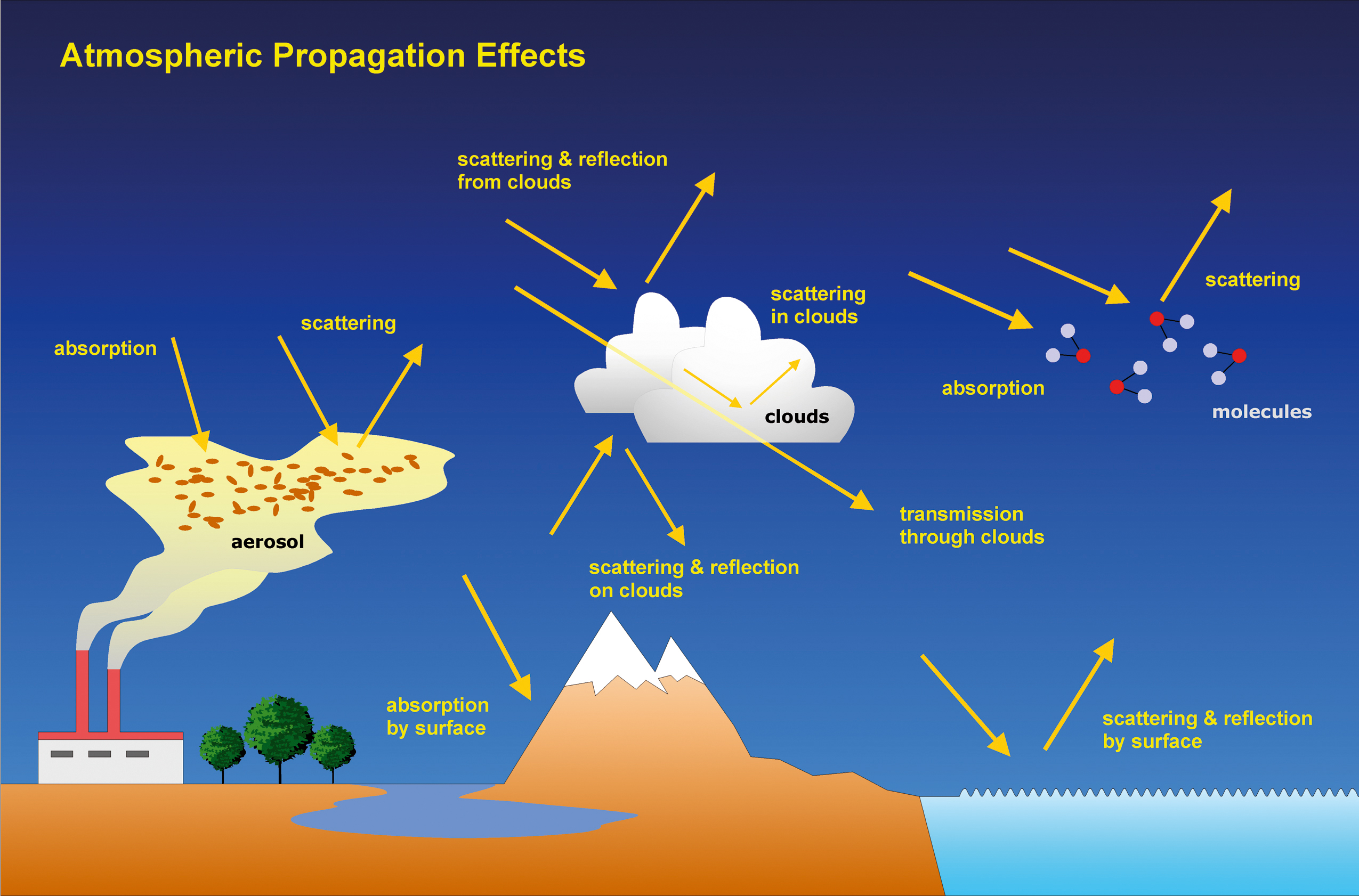
Source: Understanding Global Change
Absorption in the Atmosphere
As solar radiation travels through the atmosphere, various gases, dust, and aerosols absorb the incoming photons. Certain gases such as ozone, carbon dioxide, and water vapor have high absorption capacities for photons with energies close to their bond energies. This absorption leads to significant dips in the spectral radiation curve. For instance, water vapor and carbon dioxide absorb much of the far infrared light, while ozone absorbs a large portion of ultraviolet light.
While the absorption by specific gases alters the spectral composition of solar radiation, it has a minimal effect on the overall power. The primary factor reducing the power of solar radiation is the absorption and scattering of light by air molecules and dust. This absorption process results in a power reduction that varies based on the path length through the atmosphere. When the sun is directly overhead, the absorption by atmospheric components causes a uniform reduction across the visible spectrum, giving the light a white appearance. However, during sunrise and sunset, higher energy light is more effectively absorbed and scattered, leading to a redder hue and lower intensity.
Direct and Diffuse Radiation Due to Scattering
As sunlight traverses the atmosphere, it undergoes absorption and scattering processes. One significant mechanism of scattering is Rayleigh scattering, caused by atmospheric molecules. Rayleigh scattering is particularly efficient for short-wavelength light, such as blue light, due to its λ-4 dependence. Additionally, aerosols and dust particles contribute to light scattering, known as Mie scattering.
Effect of Clouds and Local Atmospheric Variations
Local atmospheric variations, such as cloud cover, have a substantial impact on incident solar radiation. The presence of clouds can significantly reduce the incoming solar power. Different types of cloud cover lead to varying degrees of power reduction. Heavy cloud cover, for example, can greatly diminish the amount of solar radiation reaching the Earth’s surface.

Source: ATMOS
Feel free to comment your thoughts.
